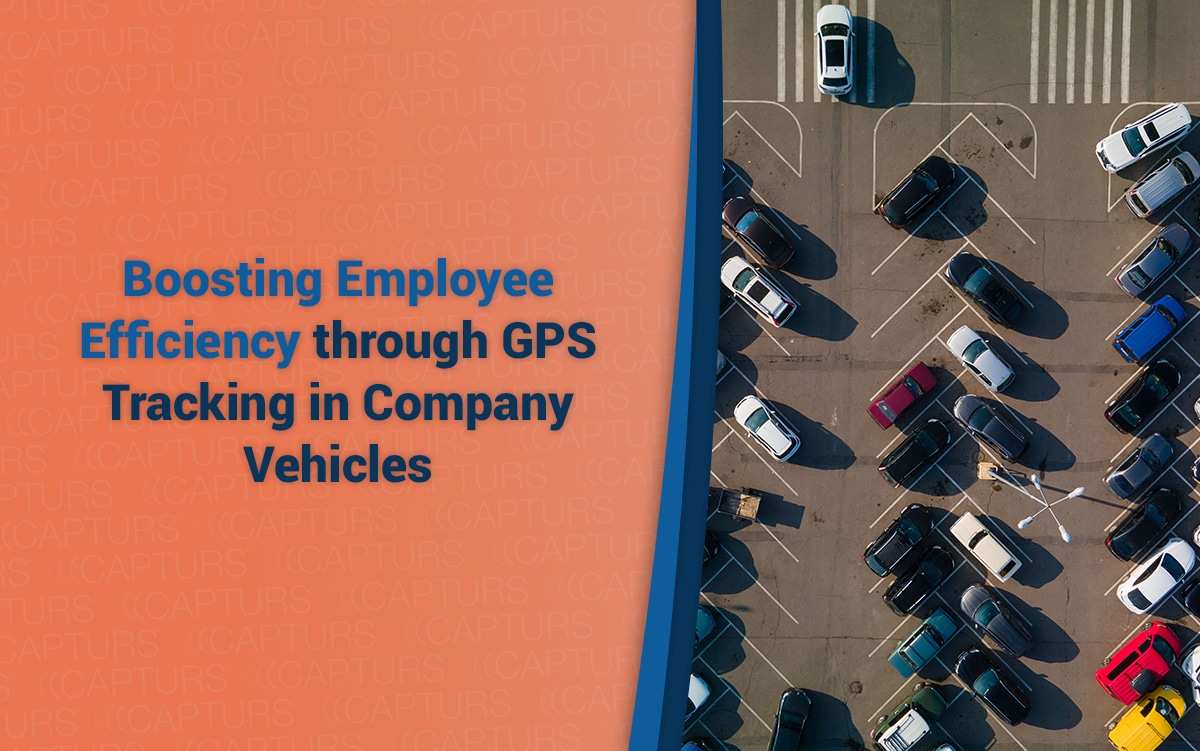Improving employee efficiency with GPS trackers in company cars

Fleet monitoring has become crucial for companies and organizations that use vehicles for their business. It consists of using GPS trackers to monitor in real time the location, speed and movements of a company or organization’s vehicles. This technology collects valuable data on fleet activities, such as routes, driving times, breaks, fuel expenditures, driver performance and vehicle utilization. This information can be used to optimize routes, reduce fuel costs, improve communication between drivers and management, increase employee and vehicle safety, and improve vehicle utilization.
The benefits of fleet monitoring with GPS trackers for employee efficiency
Improved communication between drivers and management
The use of GPS trackers allows management to track the location of vehicles in real time and communicate directly with drivers. This facilitates task coordination, route planning and incident management. In the event of an emergency, management can quickly locate a vehicle and take the necessary steps to protect employees. In addition, drivers can easily inform management of their location and status, improving transparency and collaboration.
This improved communication between drivers and management reduces response times to requests, optimizes routes, and lowers fuel costs and accident risks. In addition, it facilitates scheduling and route management for optimal vehicle and employee utilization.
Track driving hours and breaks to comply with road safety regulations
By using GPS trackers to monitor drivers’ driving hours and breaks, companies can ensure that their employees comply with road safety regulations. This minimizes the risk of traffic accidents and prevents lawsuits and penalties for non-compliance with laws and regulations.
By using driver hour tracking data, companies can also identify drivers who may need additional training or special attention in road safety. This enhances fleet safety and protects employees and third parties.
Finally, it helps to comply with working time regulations to avoid unnecessary overtime and the risk of burnout.

Increased employee productivity
First, by having better visibility into the location of vehicles in real time, companies can optimize route planning and allocate resources more efficiently. This avoids unnecessary trips, reduces waiting times and maximizes vehicle utilization. It also improves communication between drivers and management for better coordination of tasks.
By using driving time and break tracking data, companies can ensure that their employees are complying with road safety and work time regulations. This minimizes the risk of traffic accidents and prevents lawsuits and penalties for non-compliance with laws and regulations. It also ensures compliance with working time regulations to avoid unnecessary overtime and the risk of burnout. On the contrary, if a company car is used outside working hours (in case it is forbidden), the employee can also be penalized.
In addition, the company is able to determine through GPS trackers whether the employee is present at the assigned workplaces, but also whether he is punctual.
By tracking driver performance data, companies can identify training opportunities to improve driving behavior and increase employee productivity. Data collected on driving hours, routes, breaks, and fuel expenditures can be used to assess driver skills and identify areas where drivers may need to improve their performance. This allows training to be tailored to meet individual drivers’ needs, helping them improve their driving behavior and make them more efficient in their jobs.
Using GPS trackers to monitor vehicle fleets allows companies to optimize resource utilization, comply with road safety and work time regulations, and improve employee productivity through better training. This increases employee efficiency and maximizes company profits.
Concrete examples of improving employee efficiency by monitoring vehicle fleets with GPS trackers
Real-time task management for better resource allocation
Using driver performance tracking data, companies can identify the most qualified drivers to perform certain tasks and assign them accordingly. This maximizes employee productivity by allocating resources efficiently. Companies can also identify drivers who may need additional training to be able to handle more complex tasks.
Using this data, companies can also identify tasks that are more costly in terms of time and resources and optimize them to improve overall fleet efficiency. This maximizes fleet productivity and reduces costs. In short, real-time fleet monitoring with GPS trackers allows companies to manage tasks more efficiently by optimally allocating resources, maximizing employee productivity and reducing costs.

Improved route planning for optimal vehicle utilization
By using GPS trackers to monitor vehicle fleets, companies can improve route planning for optimal vehicle utilization.
By having real-time visibility into vehicle locations, companies can optimize routes based on real-time needs. This reduces unnecessary travel and maximizes vehicle utilization. Companies can also identify vehicles that are close to the end of their route and assign them to new tasks to maximize their utilization based on historical car trajectories.
Using GPS trackers to monitor vehicle fleets allows companies to optimize route planning by maximizing vehicle utilization, reducing costs and improving overall fleet efficiency. This is achieved through improved visibility into real-time vehicle location, compliance with road safety and work time regulations, and assignment of the most qualified drivers to the appropriate tasks. This maximizes employee productivity and maximizes company profits.
Tracking of working hours to avoid unnecessary overtime
Driving time and break tracking data allows companies to identify employees who are working overtime and take steps to reduce their workload. This maximizes employee utilization and minimizes overtime costs. GPS trackers can track work time and calculate the time actually worked.
